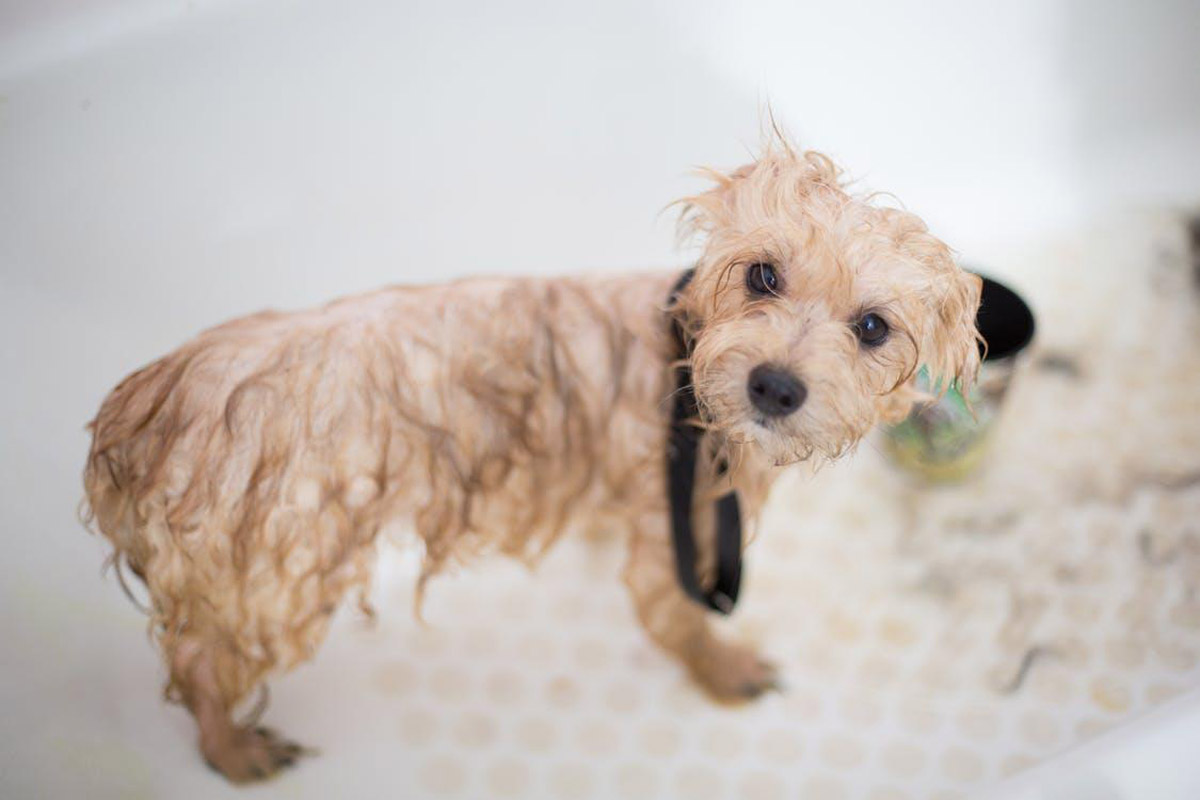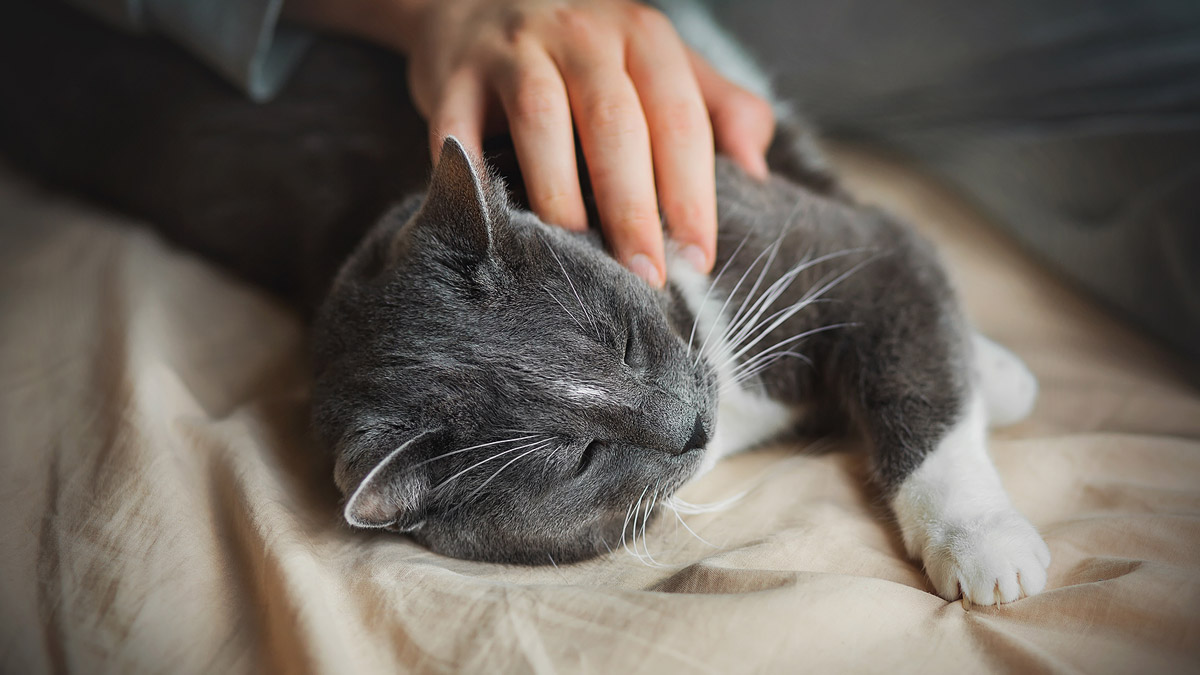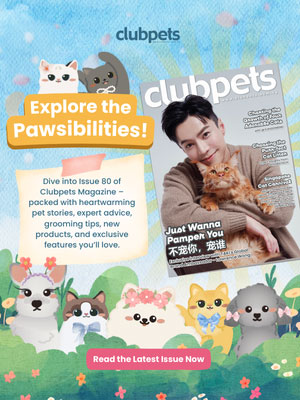How to Check Your Pet’s Health from Its Skin & Coat Conditions

Cover image source: Louis-Philippe Poitras on Unsplash
Whether you have a cat or a dog, your pet’s skin and coat are good indicators of its general health condition. This is important and highly beneficial for a pet owner to know since dogs and cats can’t verbally tell us where they’re hurting, so looking out for physical telltale signs (on top of behavioural ones) is one way to keep track of how they’re faring.
Typically, a healthy coat is shiny and smooth, not brittle or coarse, and healthy skin is always supple and clear, not greasy, flaky, or bumpy, and free of bald areas. Besides health and nutrition, regular grooming and skincare will also influence the shine and texture of your pet’s coat, no matter the type of hair coat it has.
What are the different types of hair coat that my pet might have?

Dogs
Selective breeding has resulted in the development of dogs with various types of coat characteristics. With that being said, there are three stages of hair growth before shedding occurs. The first, anagen, is the stage of growth. By the time anagen ends, the hair has attained its final length, colour and texture. The next stage, catagen, is a short transitional resting stage. In the final stage, telogen, the hair is mature and able to efficiently perform its functions. By the end of this stage, the hair would be losing its functional capabilities and will be replaced.
Additionally, the length of hair depends on the duration of the growth (anagen) stage of the hair cycle. A short anagen stage will result in a short hair, while a long anagen stage produces a long hair. Next, the shedding frequency depends on the length of the post-growing (telogen) stage. Breeds that shed frequently have a short telogen stage, while breeds that have a long telogen shed less frequently.
Notwithstanding that, the frequency of shedding is also dependent on whether the coat is single-layered or double-layered.
Single-coated dogs have just one layer of hair composed of a single type of hair.
Conversely, double-coated dogs have two types of hair. The top layer consists of hair that is longer, coarser and straighter and protects the skin from dirt and repels water. These hairs are shed infrequently. In contrast, the lower layer (undercoat) is composed of shorter, softer hairs that resemble strands of cotton wool. This layer provides extra warmth during the cooler months of the year, and is shed twice yearly before the warm weather arrives.
Therefore, dog breeds like
- Siberian Huskies, Alaskan Malamutes, and Retrievers possess a double coat consisting of long and thick hair.
- Pugs, Jack Russell Terrier and Boston Terriers possess a single coat consisting of short hair.
- Breeds like Dachshunds and Corgis have both short-haired and long-haired variants.

Source: Vinx Teoh on Unsplash
Cats
Similarly, selective breeding has resulted in cats with different coat characteristics such as:
- The hairless Sphynx,
- The curly-coated and minimally-shedding Rex cats,
- The smooth-coated Oriental breeds with sparse undercoats,
- The domestic short-haired cats with a protective outer coat and undercoat that provides additional insulation, and
- The long-haired cats with fine silky hair that tangles easily.
Some cats that live in cooler climates will undergo two heavy seasonal shedding cycles per year, but most felines that share our homes shed hair in low levels all year round.
So, what factors affect my pet’s coat and skin?

Source: Sharon McCutcheon on Unsplash
If your cat or dog is ill or experiencing stress, especially if it’s chronic or long-standing, its coat will definitely lose its shine, become more coarse or brittle, and your pet may even shed excessively.
High humidity

Source: Florencia Potter on Unsplash
In a country like Singapore, humidity is high all year round. In fact, weather data from 2020 showed that the humidity was at least 80% from January to December! Consequently, dogs with thick coats or double coats are vulnerable to heat rash caused by such high humidity.
In our hot and humid weather, once-a-week bathing followed by thorough rinsing and drying will suffice. More frequent shampooing may cause unnecessary loss of coat lustre and skin dryness.
However, if your dog has a pre-existing skin disease and requires frequent bathing as treatment, do so under the careful instruction of your vet and with the appropriately prescribed shampoo.
Stress

Source: Nick Mundackal on Unsplash
Stress reduces the immune system’s ability to deal with infections and to initiate healing. As a result, chronic emotional stress and chronic illnesses will have serious adverse effects on your dog’s hair coat and skin.
Disease
Changes in the coat or skin can be caused by a skin disease or a manifestation of an underlying systemic disease. Skin diseases like allergic skin disease, parasitic skin infestations, bacterial and yeast infections, seborrhea and hypothyroidism can produce skin and coat changes like dryness, greasiness, flakiness or even rashes.
Out of these listed skin diseases, allergies are arguably the most common cause of skin disease in dogs. They may be inherited or arise from other factors such as environmental conditions, poor quality food ingredients or exposure to allergens. In some cases, they may even be seasonal as caused by pollen and fleas. Unsurprisingly, dealing with intense itchiness can affect a dog’s quality of life severely.
Along the same train of thought, skin and coat diseases can arise from hormone imbalances or other metabolic problems, digestive disturbances such as chronic diarrhoea, parasites, both internal (intestinal worms) and external (fleas, ticks, mange mites), and cancer.
Lastly, joint conditions such as osteoarthritis and obesity can also potentially cause skin problems such as dandruff or matting without proper grooming.
Nutrition

It goes without saying that a complete[1] and well-balanced[2] diet comprising high quality ingredients[3] is important.
————————————————
[1] A complete diet contains carbohydrates, proteins, fats, vitamins and minerals.
[2] A balanced diet refers to the presence of all 5 nutrient groups in the aforementioned diet in the correct proportions.
[3] High quality ingredients refer to foods that are highly digestible and easily broken down in the intestines to be easily absorbed as nutrients.
24-hour access to clean and fresh drinking water is also essential because water is necessary for all your dog’s physiological systems to function properly.
If nutrients are not digested well or are of poor quality, they will not be able to meet the body’s needs — a cat or dog with an inadequate diet will have a dull and dry hair coat and potentially shed excessively. On top of that, undigested and poor-quality nutrients will turn into waste products that your pet’s liver and kidneys have to work harder to eliminate.
An ideal diet, as any veterinarian in Singapore would agree, is one that is individualised to your pet’s specific life stage — puppy (growing) stage, adult (maintenance) stage, senior, pregnancy, lactation. If your pet requires nutrition related to specific conditions, it is recommended to consult your vet for the best nutrition plan for your pet!
Husbandry Practices i.e. Grooming

Source: Benjamin Lehman on Pexels
All cats and dogs benefit from regular grooming. It removes loose hairs and dead skin cells, keeps the coat free of dirt, debris, and external parasites, and distributes natural skin oils along the hair shafts for healthy skin and hair!
In addition to that, daily brushing for cats and dogs with long, silky, or curly coats, will prevent their hair from becoming tangled or matted, especially around the ears, in the armpits, and along the back of the legs. It also improves overall blood circulation.
It will also cut down dramatically on the amount of hair and dander floating around the home, which will not only keep your house tidier, but also reduce the number of airborne allergens for the hoomans with mild allergies!
If you have a cat, brushing it every day will also reduce the amount of hair that it swallows during self-grooming with its tongue, which then decreases the number of hairballs that may develop.
Ultimately, regular grooming improves the chances of detecting unusual lumps and bumps or areas of sensitivity earlier on.
Lastly, if your pet gets soiled by dirt, faeces or urine, those affected areas should be immediately cleaned. For this, plain water will suffice.
Closing Thoughts

Although the symptoms mentioned within this article may or may not be manifestations of an underlying skin disease or a non-skin illness, you should schedule a visit to your vet regardless. Whichever the cause, abnormal conditions should always be inspected and treated promptly.
________________________________________
This article was written for Pet Wellness Products Pte Ltd.








